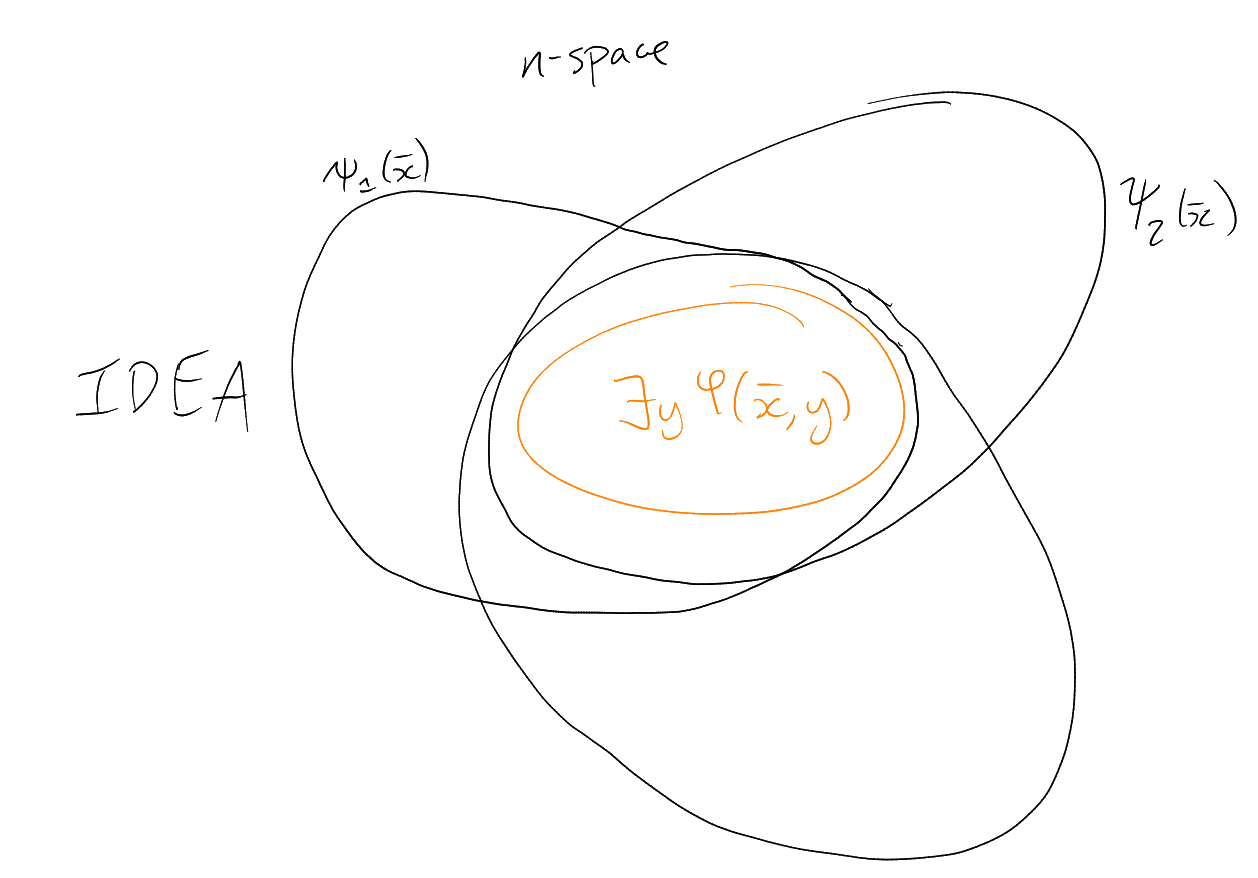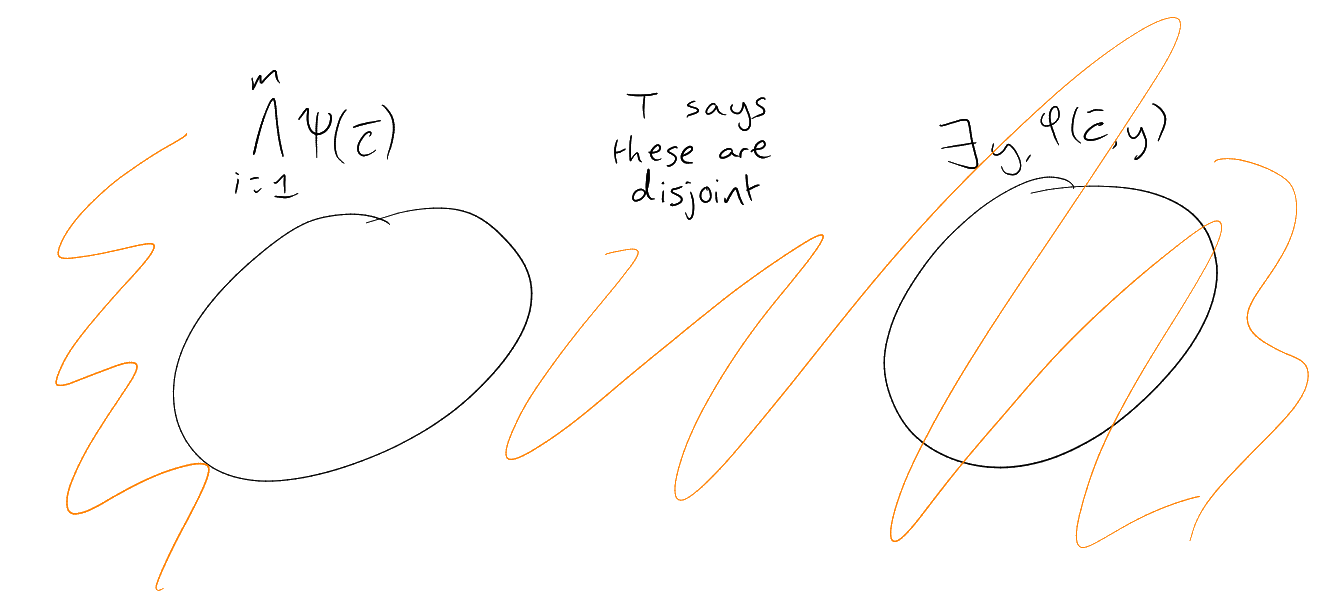11 Introduction to Quantifier Elimination
-
(1)
Let
i.e.
Then
-
(2)
Let
Quantifier free formulas in one variable are boolean combinations of polynomial equations, i.e. define sets of size finite or cofinite. But
Remark:
We can show
This is because we can define
Note: you can always find a language in which the theory of a structure has quantifier elimination: just add a relation symbol for each non quantifier-free formula. This is called the “Morleyisation” of a structure, but isn’t particularly informative.
-
-
for any quantifier-free formula
Proof. Exercise: induction on the complexity of formulas. □
-
-
(i)
-
(ii)
Let
-
(iii)
For any
Proof.
-
(i)
Let
By quantifier elimination, we have
Now
-
(iii)
As
-
(ii)
By Lemma 11.3, it is sufficient to show for
Let
In definable sets:

Claim:
Proof: Suppose not. Then there is an
Let
Then
So
IDEA: build
Suffices to prove
Assume
-
-
In definable sets:

Let
So
contradiction. So by compactness,
This proves the claim.
Reminder: the claim was that
Recall
by choice of
Then
hence
Thus
-
Remark.
-
(1)
In (iii) we may assume
-
(2)
In (ii) and (iii) we may assume